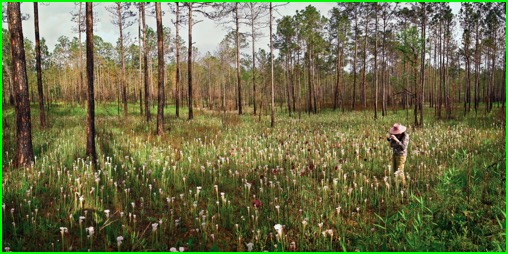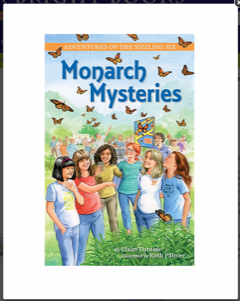YA Eco Mysteries, Memoirs, Novels & Travel
The Mobile-Tensaw Delta: A Mysterious Wilderness
27/05/20 17:46 Filed in: Environmental Education
The Mobile-Tensaw Delta: A Mysterious Wilderness
A writer’s words vibrate to the changing tides of time, like leaves whispering in a gentle breeze, or whistling in gale, or roaring in a hurricane. The mounting death toll of Covid-19 plays on our emotions, evoking rage, horror, misery, and dread. Now more than ever, writers seek words to bring calm, delight, joy, and encouragement. For us, looking at pictures of our travels to fascinating places nearby and faraway, recalls happy memories and good feelings. So, I’m dedicating this blog about our trip to the Mobile-Tensaw Delta, to you! (see Blog Eco Mysteries and Earth Day). And we’re dreaming about taking another trip to the delta when the pandemic, finally abates. Perhaps, you will join us.
Mobile River, Tensaw-Mobile Delta (Boris Datnow)
A writer’s words vibrate to the changing tides of time, like leaves whispering in a gentle breeze, or whistling in gale, or roaring in a hurricane. The mounting death toll of Covid-19 plays on our emotions, evoking rage, horror, misery, and dread. Now more than ever, writers seek words to bring calm, delight, joy, and encouragement. For us, looking at pictures of our travels to fascinating places nearby and faraway, recalls happy memories and good feelings. So, I’m dedicating this blog about our trip to the Mobile-Tensaw Delta, to you! (see Blog Eco Mysteries and Earth Day). And we’re dreaming about taking another trip to the delta when the pandemic, finally abates. Perhaps, you will join us.
Mobile River, Tensaw-Mobile Delta (Boris Datnow)
The world-renowned biologist and prize-winning author, Edward O. Wilson, who grew up in Alabama, describes the Mobile-Tensaw River Delta as a “stream-laced wilderness, an impenetrable jungle, and a great forest magical to the imagination.” He called this place, where the rivers meet the sea, the American Amazon because of its rich biodiversity. It’s a place where intrepid explorers may yet discover new species, flourishing in its hidden depths.
The delta floodplain, forests, and swamps, including the Red Hills to the north rank as the second largest river system in the lower United States. Its northernmost point begins where the Tombigbee and the Alabama rivers meet, and its southern most point ends in Mobile Bay, which empties into the Gulf of Mexico. The rivers flood in the spring, turning the salty bay into a 20-mile-long estuary where fishes and mollusks of every variety come to spawn. The mighty plume of muddy river water, sweeping into Mobile Bay and Gulf of Mexico, is visible from outer space.
At the last count, the Mobile-Tensaw Delta is home to more than 800 species of non-vertebrates, 337 species of fish (36 at risk), 126 amphibians & reptiles (30 at risk), 355 Birds (38 at risk), 49 mammals (7 at risk). The biggest number of turtle species in the world, one on the endangered list, live in the central Gulf Coast and the Delta. In the spring, thousands of migrating songbirds from Yucatan make their first landfall on nearby Dauphin Island. Alabama alone, ranks number one in the US for freshwater fish, mussels, turtles, snails, and crayfish species.
Great Blue Heron Mobile River Delta (Boris Datnow)
When the ridges and deep ravines of the Red Hills, on the northern boundary, are added to the delta the biodiversity climbs even higher. It’s the only place on earth where the endangered and rare giant Red Hills salamander lives. And deep inside this place, old-growth “ice-age forests” and plant species—left behind when the last continental glacier retreated—flourish. At least 24 oak species grow there—possibly a world record.
On the western edge of the delta, the longleaf prairies are home to an hundreds of species of wild flowers and plants, dotting the grass with splashes of pink, purple, red, yellow and blue. And this place is home to the world’s greatest concentration of pitcher plant species. In the Splinter Hill Bog, thousands of carnivorous, vermillion and white pitcher plants bloom in the wild grass, wending between stands of tall longleaf pine.

Splinter Hill Bog Pitcher Plants (Boris Datnow)
The place has a played an important role in our nation’s history, too. Hidden deep within the interior, explorers may stumble across the unexcavated mound village of the Mississippian Indian culture, AD 1250–1550. Across il War.
Forests Mobile Tensaw Delta (Boris Datnow)
Despite the delta’s treasure trove of species, pollution continues to damage this unique ecosystem. For decades, chemical plants, military weapons plants, steel mills, paper mills, municipal sewer systems, farms, and power plants have rapidly increased the pollution. In addition, dams upstream have blocked the free flow of the rivers, killing off fish, freshwater mussels, plants, and forests that depend on clean water. There are also concerns that increasing commercial development for recreation will diminish the scenic beauty of the lower delta.
More recently, the blowout of an oil rig resulted in a massive oil spill, which greatly escalated the pollution. From dolphins to manatees, sea turtles to oysters, fishes to birds, corals to plankton scientists are finding on-going environmental destruction from one of the worst oil spills in our nation’s history.
As a result, many species have gone extinct, and creatures that inhabit the delta, floodplains, forests, swamps, hills and valleys are on the brink of never coming back.
Yet, the Tensaw-Mobile River Delta remains a mysterious wilderness to be explored with care. Few roads penetrate the interior. And not all of the bountiful diversity of life has been discovered. Perhaps you will be the scientist-adventurer who will name a new species. Perhaps you will be the citizen-scientist who takes action to help heal the harm to North America’s Amazon.
The delta floodplain, forests, and swamps, including the Red Hills to the north rank as the second largest river system in the lower United States. Its northernmost point begins where the Tombigbee and the Alabama rivers meet, and its southern most point ends in Mobile Bay, which empties into the Gulf of Mexico. The rivers flood in the spring, turning the salty bay into a 20-mile-long estuary where fishes and mollusks of every variety come to spawn. The mighty plume of muddy river water, sweeping into Mobile Bay and Gulf of Mexico, is visible from outer space.
At the last count, the Mobile-Tensaw Delta is home to more than 800 species of non-vertebrates, 337 species of fish (36 at risk), 126 amphibians & reptiles (30 at risk), 355 Birds (38 at risk), 49 mammals (7 at risk). The biggest number of turtle species in the world, one on the endangered list, live in the central Gulf Coast and the Delta. In the spring, thousands of migrating songbirds from Yucatan make their first landfall on nearby Dauphin Island. Alabama alone, ranks number one in the US for freshwater fish, mussels, turtles, snails, and crayfish species.
Great Blue Heron Mobile River Delta (Boris Datnow)
When the ridges and deep ravines of the Red Hills, on the northern boundary, are added to the delta the biodiversity climbs even higher. It’s the only place on earth where the endangered and rare giant Red Hills salamander lives. And deep inside this place, old-growth “ice-age forests” and plant species—left behind when the last continental glacier retreated—flourish. At least 24 oak species grow there—possibly a world record.
On the western edge of the delta, the longleaf prairies are home to an hundreds of species of wild flowers and plants, dotting the grass with splashes of pink, purple, red, yellow and blue. And this place is home to the world’s greatest concentration of pitcher plant species. In the Splinter Hill Bog, thousands of carnivorous, vermillion and white pitcher plants bloom in the wild grass, wending between stands of tall longleaf pine.

Splinter Hill Bog Pitcher Plants (Boris Datnow)
The place has a played an important role in our nation’s history, too. Hidden deep within the interior, explorers may stumble across the unexcavated mound village of the Mississippian Indian culture, AD 1250–1550. Across il War.
Forests Mobile Tensaw Delta (Boris Datnow)
Despite the delta’s treasure trove of species, pollution continues to damage this unique ecosystem. For decades, chemical plants, military weapons plants, steel mills, paper mills, municipal sewer systems, farms, and power plants have rapidly increased the pollution. In addition, dams upstream have blocked the free flow of the rivers, killing off fish, freshwater mussels, plants, and forests that depend on clean water. There are also concerns that increasing commercial development for recreation will diminish the scenic beauty of the lower delta.
More recently, the blowout of an oil rig resulted in a massive oil spill, which greatly escalated the pollution. From dolphins to manatees, sea turtles to oysters, fishes to birds, corals to plankton scientists are finding on-going environmental destruction from one of the worst oil spills in our nation’s history.
As a result, many species have gone extinct, and creatures that inhabit the delta, floodplains, forests, swamps, hills and valleys are on the brink of never coming back.
Yet, the Tensaw-Mobile River Delta remains a mysterious wilderness to be explored with care. Few roads penetrate the interior. And not all of the bountiful diversity of life has been discovered. Perhaps you will be the scientist-adventurer who will name a new species. Perhaps you will be the citizen-scientist who takes action to help heal the harm to North America’s Amazon.


